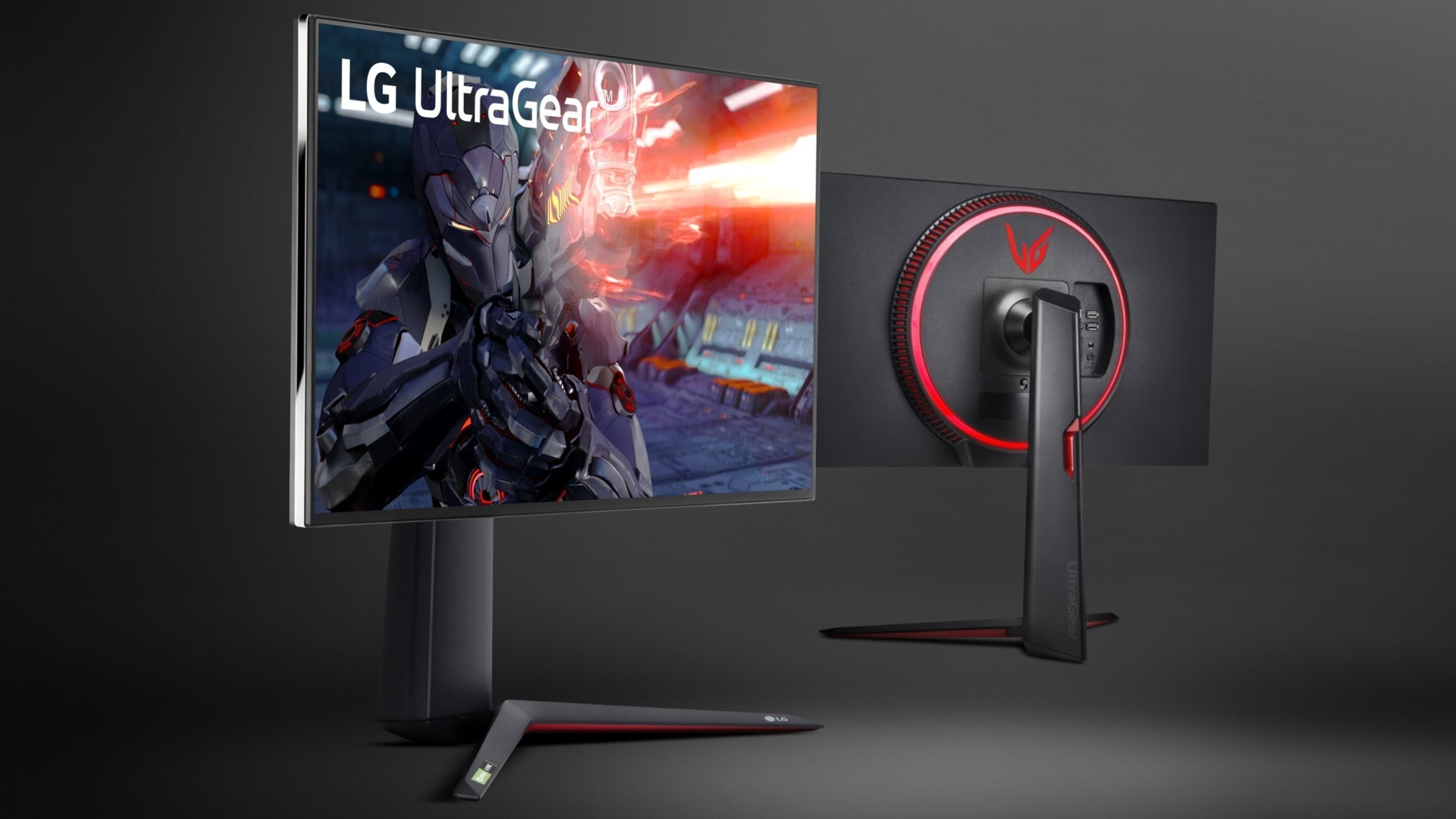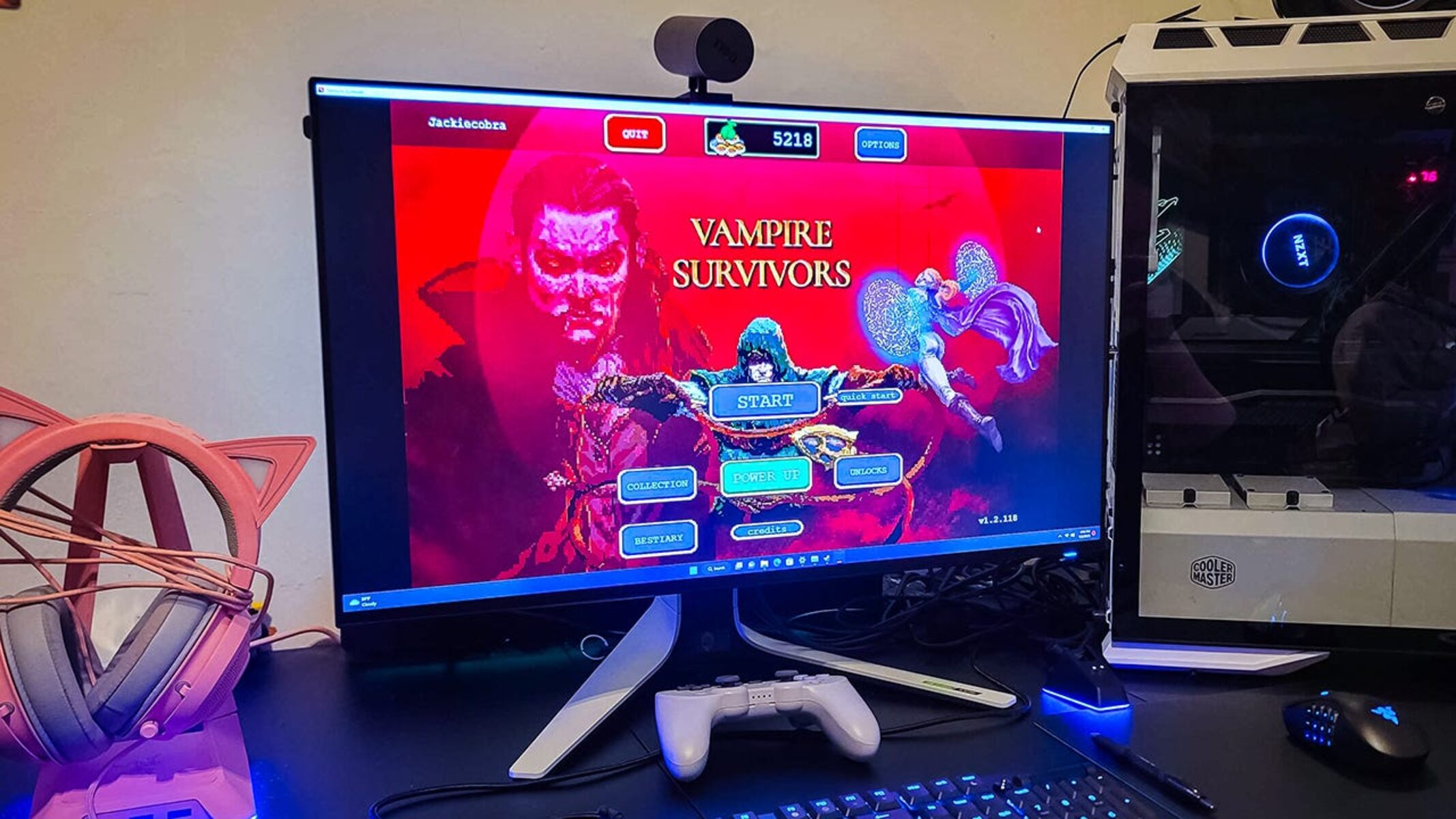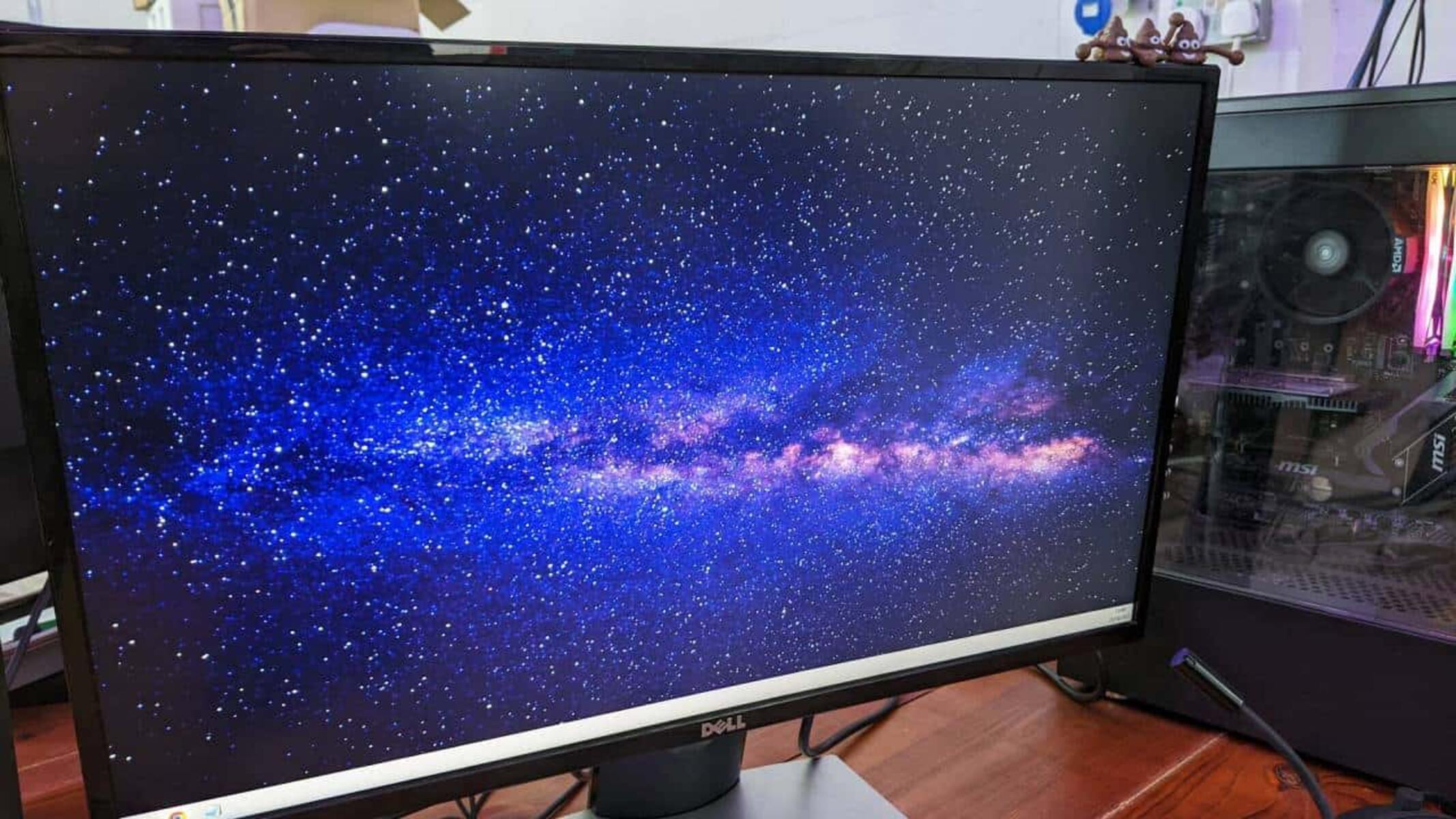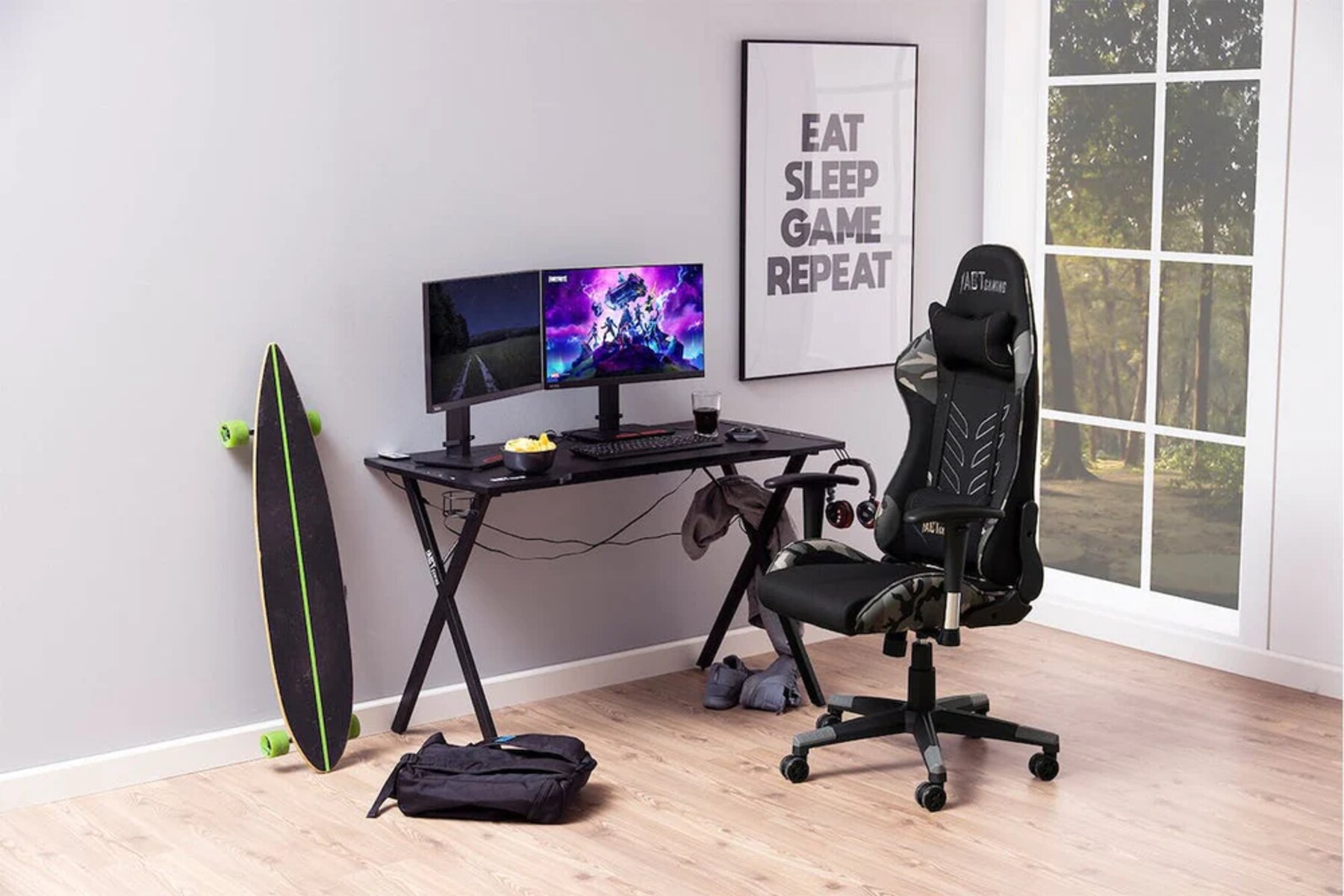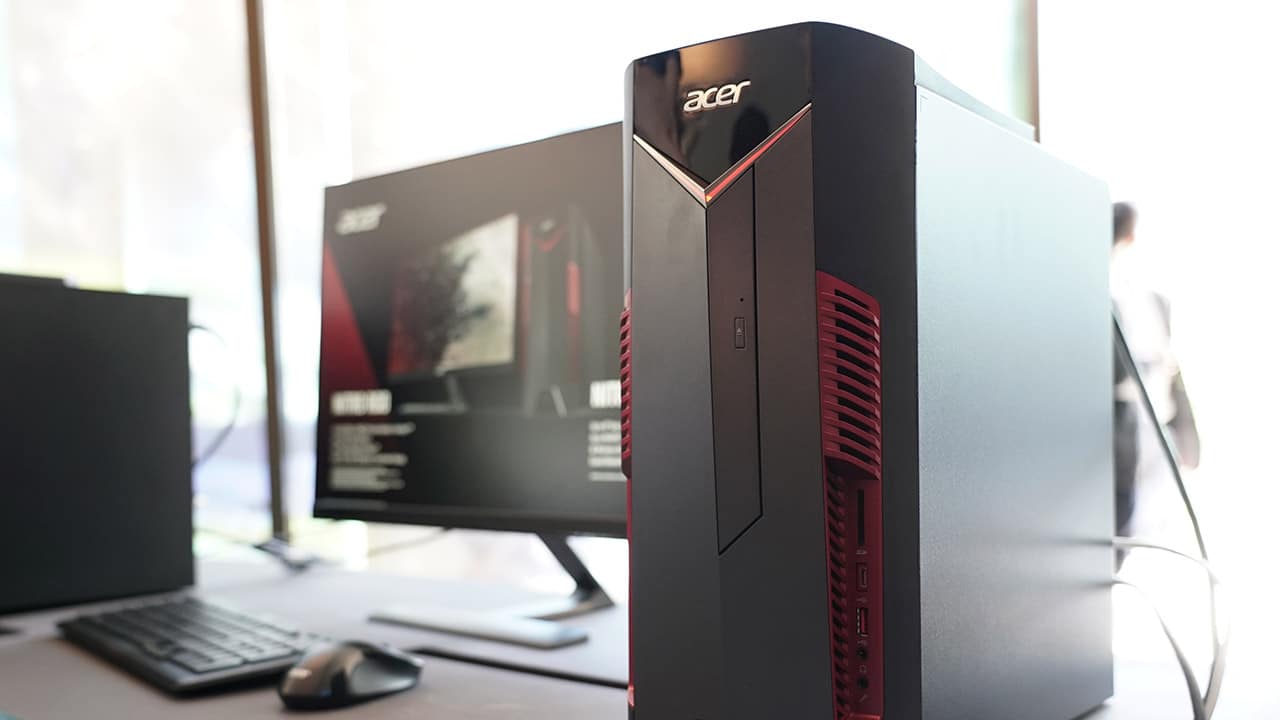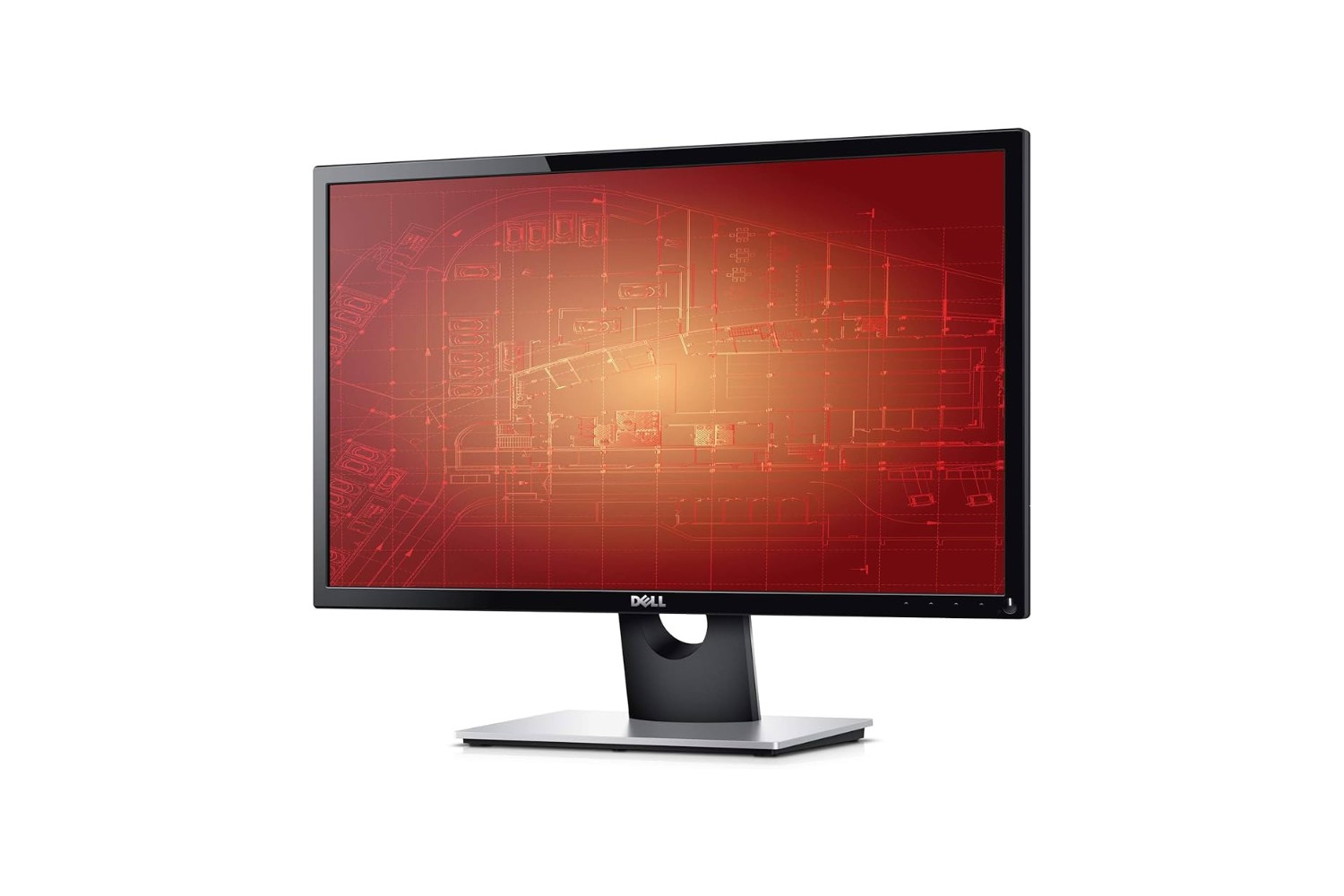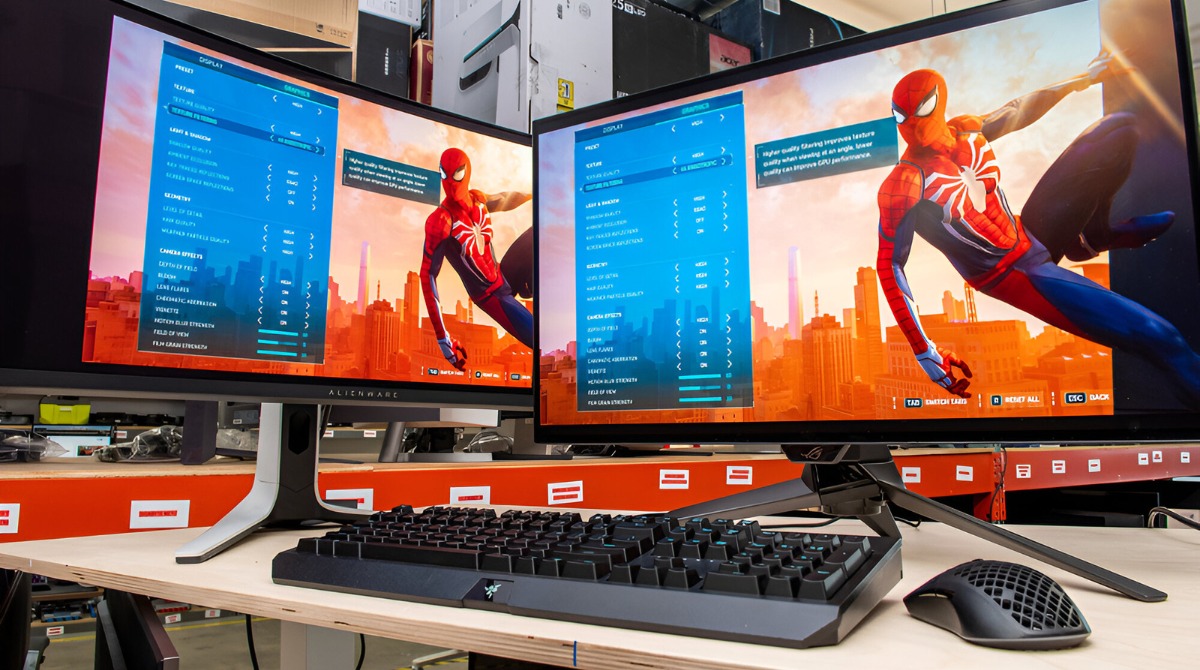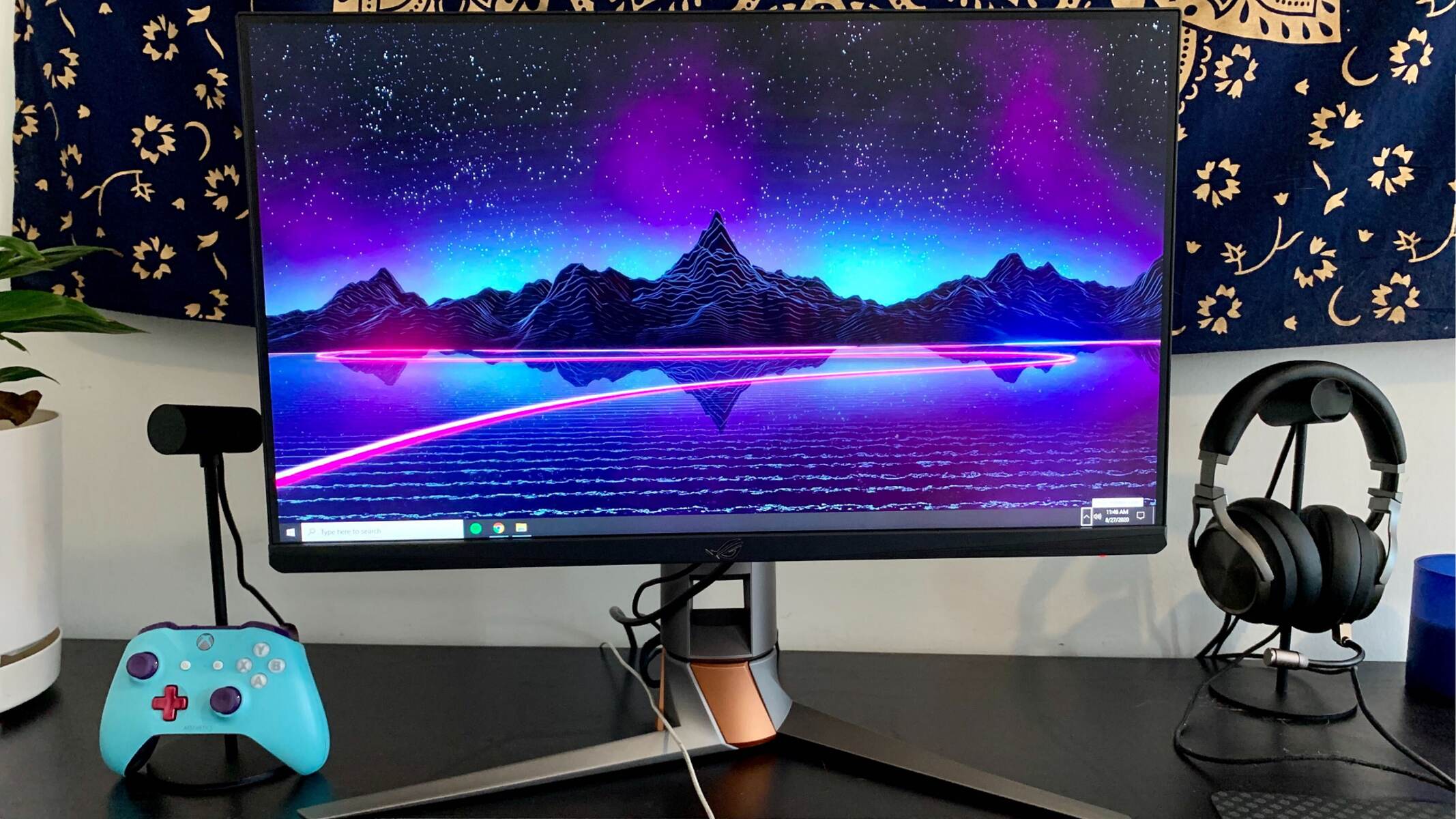Introduction
Welcome to the exciting world of gaming, where split-second decisions and lightning-fast reflexes are the keys to victory. As a gamer, you know that having a high-performance gaming setup is crucial for maximizing your gaming experience. From powerful graphics cards to ergonomic peripherals, every component plays a role in giving you the edge over your opponents. One such vital component is your gaming monitor.
When it comes to gaming monitors, there are several factors to consider, including resolution, refresh rate, and panel type. However, one often-overlooked aspect that significantly impacts your gaming experience is the monitor’s response time.
The response time of a gaming monitor refers to the time it takes for a pixel to transition from one color to another. It is measured in milliseconds (ms) and represents the monitor’s ability to keep up with fast-paced scenes, preventing motion blur and ghosting. A lower response time means that pixels can change color faster, resulting in sharper and more fluid visuals.
But why is response time so important in gaming? The answer lies in the fast-paced nature of games, where every millisecond can make a difference. Whether you’re engaged in an intense first-person shooter or a rapid-fire strategy game, having a monitor with a good response time can provide a competitive advantage.
When a monitor has a slow response time, it can lead to motion blur or ghosting, which can make it harder to track fast-moving objects or enemies. This can ultimately hinder your performance, causing delayed reactions and missed opportunities. On the other hand, a monitor with a faster response time will give you clearer and more responsive visuals, allowing you to react quicker and make better decisions in the game.
However, determining what constitutes a good response time on a gaming monitor can be a bit subjective. As technology progresses, manufacturers have been able to produce monitors with increasingly faster response times. In general, a response time of 1ms to 5ms is considered excellent for gaming, providing minimal motion blur and ghosting.
It is important to note that the advertised response time by manufacturers is often the “gray-to-gray” (GTG) response time, which measures the time it takes for a pixel to transition from one shade of gray to another. While this gives a rough estimate of the monitor’s response time, it may not accurately reflect its overall performance.
In the next sections, we will delve deeper into the different types of response time, discuss the impact of response time on gaming performance, and explore how to measure and optimize the response time on your gaming monitor.
What is response time?
In the context of gaming monitors, response time refers to the speed at which a pixel can change from one color to another. It is a critical specification that affects the overall visual quality and performance of the monitor.
The response time is measured in milliseconds (ms) and is usually represented as the time it takes for a pixel to transition from black to white and then back to black (typically referred to as “black-to-white-to-black” transition) or from one shade of gray to another (gray-to-gray transition).
A fast response time is essential to prevent motion blur and ghosting. Motion blur occurs when the pixels on the screen are unable to keep up with the rapid movements in a game, resulting in blurry and smudged images. Ghosting, on the other hand, describes the trail or residual image that lingers on the screen after a fast-moving object or character has passed by.
Response time is influenced by various factors, including the monitor’s technology, panel type, and pixel overdrive. Older display technologies, such as cathode ray tube (CRT) monitors, generally had slower response times compared to modern LCD and LED monitors.
Panel type also has an impact on response time. TN (Twisted Nematic) panels typically offer the fastest response times, making them popular among gamers who prioritize speed. VA (Vertical Alignment) panels have slightly slower response times, while IPS (In-Plane Switching) panels generally have the slowest response times but offer better color accuracy and wider viewing angles.
Pixel overdrive is a technology implemented by monitor manufacturers to boost the response time artificially. It increases the voltage applied to the pixels to make them change color faster. However, excessive pixel overdrive can lead to inverse ghosting, where fast-moving objects leave a trail of artifacts behind them.
It is important to note that response time alone does not guarantee a smooth gaming experience. Other factors like input lag, refresh rate, and resolution also play significant roles. Therefore, it is crucial to find a balance between these specifications to ensure optimum gaming performance.
Now that we understand what response time is and its importance in gaming, let’s explore why it is crucial to consider when choosing a gaming monitor.
Why is response time important in gaming?
Response time is a critical factor in gaming because it directly affects the visual quality and responsiveness of the monitor. Fast-paced action and quick movements are common in games, and a monitor with a slow response time can adversely impact your gaming experience in several ways.
One of the primary issues that arise from a slow response time is motion blur. When objects or characters in a game move swiftly across the screen, a monitor with a slow response time may not be able to keep up with the changes, resulting in blurring and smudging of the images. This can make it difficult for gamers to track the movements and aim accurately, resulting in missed targets and decreased performance.
Another problem that can occur with a slow response time is ghosting. Ghosting refers to the faint trail or afterimage that appears on the screen after a fast-moving object has passed. It can create distractions and cause visual inconsistencies, leading to reduced immersion and potentially affecting gameplay. Ghosting can make it challenging to identify enemies or decipher the details in fast-paced scenes, compromising your ability to react swiftly and make informed decisions.
Having a gaming monitor with a fast response time can significantly minimize motion blur and ghosting, resulting in clearer, sharper, and more fluid visuals. This can greatly enhance your gaming experience, allowing you to react quickly to in-game events, making precise movements, and gaining a competitive edge over your opponents.
Along with visual quality, response time also impacts the overall responsiveness of the monitor. A fast response time ensures that the actions you perform with your gaming peripherals, such as mouse clicks or key presses, are registered and displayed on the screen almost instantaneously. This real-time feedback is crucial in fast-paced games, where split-second decisions and precise timing can be the difference between victory and defeat.
Furthermore, a monitor with a slow response time can introduce input lag, which is the delay between when you perform an action and when it is reflected on the screen. This delay can throw off your timing and coordination, affecting your ability to perform complex maneuvers or execute actions with precision.
By choosing a gaming monitor with a fast response time, you can minimize input lag and ensure that your actions are translated on-screen with minimal delay. This can make your gaming experience more immersive, engaging, and enjoyable.
In the next section, we will discuss the different types of response time and explore what is considered a good response time on a gaming monitor.
Different types of response time
When it comes to response time in gaming monitors, there are generally two types that are commonly mentioned: black-to-white response time and gray-to-gray response time.
The black-to-white response time represents the time it takes for a pixel to transition from displaying black to white. This type of response time is commonly used in marketing materials and specifications of gaming monitors. However, it does not provide a complete picture of the monitor’s overall performance in handling color transitions.
The gray-to-gray (GTG) response time, on the other hand, is a more comprehensive measurement that represents the time it takes for a pixel to transition from one shade of gray to another. Since gray is a commonly used color in displaying images, this measurement covers a broader range of color transitions.
Manufacturers often advertise the GTG response time as it gives a better indication of the monitor’s actual performance. However, it is important to note that the GTG response time can vary depending on the specific shades of gray used in the measurement. Brighter shades of gray generally result in faster response times, while darker shades can lead to slower response times.
It is also worth mentioning that the advertised response time by manufacturers is usually the best-case scenario. In real-world usage, the actual response time may vary depending on factors such as the specific content being displayed, the panel technology used in the monitor, and the monitor’s pixel overdrive settings.
Another factor to consider in response time is the presence or absence of pixel overdrive. Pixel overdrive is a technique used by monitor manufacturers to artificially enhance the response time of the panel. It involves increasing the voltage applied to the pixels to make them change colors faster. While pixel overdrive can improve response time, excessive use of it can also introduce artifacts and visual inconsistencies, such as inverse ghosting.
When comparing different gaming monitors, it is essential to consider both the black-to-white and gray-to-gray response times, as well as any pixel overdrive technologies implemented, to get a better understanding of their overall performance.
While a faster response time generally leads to better visual quality and responsiveness, it is important to strike a balance between response time and other factors, such as input lag and refresh rate, to ensure a seamless gaming experience. In the next section, we will explore what is considered a good response time on a gaming monitor and its impact on gaming performance.
What is a good response time on a gaming monitor?
When it comes to determining what constitutes a good response time on a gaming monitor, it is important to consider the specific requirements of your gaming needs and preferences.
In general, a response time of 1ms to 5ms is considered excellent for gaming. Monitors within this range offer minimal motion blur and ghosting, providing crisp and fluid visuals during fast-paced gameplay.
However, it is essential to note that response time alone does not guarantee a flawless gaming experience. Other factors, such as input lag and refresh rate, also play significant roles in delivering smooth and responsive visuals.
Input lag refers to the delay between when a signal is sent to the monitor and when it is displayed on the screen. A gaming monitor with low input lag will provide real-time feedback and minimize any noticeable delays between your actions and their display on the screen. To achieve the best gaming experience, it is important to consider both response time and input lag in combination.
Refresh rate is another crucial factor to consider alongside response time. The refresh rate represents the number of times the monitor can refresh the image on the screen per second, measured in Hertz (Hz). A higher refresh rate, such as 144Hz or 240Hz, allows for smoother animations and reduces screen tearing, enhancing the overall visual experience.
Ultimately, the ideal response time on a gaming monitor will depend on the type of games you play and your personal preferences. If you primarily play fast-paced competitive games, such as first-person shooters or racing games, a monitor with a 1ms to 5ms response time would be the most suitable choice. However, if you enjoy slower-paced games that prioritize visual quality and immersion, you may be more forgiving of slightly higher response times.
It is essential to consider your own gaming requirements and find the right balance between response time, input lag, and refresh rate. Some gamers may prioritize a faster response time for optimal responsiveness, while others may prioritize a higher refresh rate for smoother gameplay. Ultimately, finding the perfect combination will depend on your personal preferences and budget.
In the next section, we will discuss input lag in more detail and explore its impact on gaming performance.
Understanding input lag
In addition to response time, input lag is another crucial factor to consider when it comes to gaming monitors. Input lag refers to the delay between when you perform an action, such as clicking a mouse button or pressing a key, and when the corresponding action is displayed on the screen.
Input lag can have a significant impact on your gaming experience, as it directly affects the responsiveness and accuracy of your actions. A higher input lag can result in a noticeable delay between your input and the visual feedback, leading to a less immersive and hindered gaming experience.
There are several factors that contribute to input lag, including the monitor’s internal processing time, signal transmission between the gaming device and the monitor, and the panel technology used in the monitor.
The internal processing time of the monitor refers to the time it takes for the monitor to receive and process the input signal. Monitors with faster processing times will have lower input lag and provide a more instantaneous display of your actions.
The signal transmission between the gaming device (such as a PC or console) and the monitor can also introduce additional input lag. Wired connections, such as DisplayPort or HDMI, generally have lower latency compared to wireless connections like Bluetooth or Wi-Fi. Choosing a direct and reliable connection between your gaming device and the monitor can help minimize input lag and ensure a more responsive gaming experience.
The panel technology used in the monitor can also affect input lag. Different panel types, such as TN, VA, and IPS, have varying degrees of input lag. TN panels typically have the lowest input lag, making them a popular choice among competitive gamers who prioritize responsiveness. VA and IPS panels tend to have slightly higher input lag but offer better color accuracy and wider viewing angles.
It is important to understand that while a monitor with a fast response time can minimize motion blur and ghosting, it does not necessarily mean it has low input lag. Both response time and input lag are critical factors to consider when choosing a gaming monitor.
To ensure the best gaming experience, it is recommended to choose a gaming monitor with both low response time and low input lag. By combining these two specifications, you can enhance the visual quality, responsiveness, and accuracy of your gameplay.
In the next section, we will explore the impact of response time and input lag on gaming performance and discuss how to measure these factors.
The impact of response time on gaming performance
The response time of a gaming monitor has a significant impact on gaming performance, influencing both the visual quality and the overall gameplay experience. A fast response time can provide several advantages, while a slow response time can hinder your performance in various ways.
One of the primary benefits of a fast response time is reduced motion blur. When playing fast-paced games, the rapid movements of objects or characters can result in motion blur on the screen. A monitor with a fast response time can keep up with these movements, ensuring that the visuals remain sharp and clear. This enables you to track moving targets more accurately, react swiftly to in-game events, and make precise movements, enhancing your overall gameplay performance.
Another advantage of a fast response time is the reduction or elimination of ghosting. Ghosting occurs when there is a residual image or trail left behind after a fast-moving object has moved across the screen. This can be distracting and affect your ability to perceive details accurately. With a low response time, the monitor can transition between frames quickly, reducing the occurrence of ghosting and providing a more immersive and visually pleasing experience.
In addition to improving visual quality, a fast response time contributes to enhanced responsiveness. When you perform an action, such as clicking a mouse button or pressing a key, the monitor’s fast response time ensures that the corresponding action is displayed almost instantaneously. This real-time feedback is crucial for fast-paced games that require precise timing and quick reactions. It allows you to execute actions with minimal delay, improving your overall gaming performance and giving you a competitive edge.
On the other hand, a monitor with a slow response time can have several negative impacts on gaming performance. The occurrence of motion blur and ghosting can make it challenging to track fast-moving objects or enemies, leading to missed opportunities and decreased accuracy. This can result in delayed reactions and poorer gameplay performance, ultimately affecting your chances of success in the game.
Furthermore, a slow response time can introduce input lag, which can cause noticeable delays between your actions and their display on the screen. This delay can affect your timing and coordination, making it difficult to perform precise maneuvers or execute actions with accuracy. It can disrupt your gameplay flow and hinder your ability to respond quickly to changing situations.
Overall, the response time of a gaming monitor is a critical factor that directly impacts your gaming performance. A monitor with a fast response time can provide clearer visuals, reduce motion blur and ghosting, enhance responsiveness, and improve your overall gaming experience. On the other hand, a monitor with a slow response time can introduce visual artifacts, hinder your ability to track fast-paced action, and introduce input lag, negatively impacting your gameplay performance.
In the next section, we will discuss how to measure response time and factors that can affect it, helping you make an informed decision when choosing a gaming monitor.
How to measure response time
Measuring the response time of a gaming monitor can help you assess its performance and determine how well it handles fast-paced action and motion. While the most accurate measurement is done in controlled laboratory environments, there are a few methods you can use to get a general idea of a monitor’s response time.
One common method involves using specialized software or websites that offer response time tests. These tests typically display a series of images or patterns that transition rapidly on the screen. By observing how the monitor handles these transitions, you can get an estimation of its response time. You can find various response time testing tools available online, such as Blur Busters UFO Test or Testufo.com, which provide simple and convenient ways to assess response time.
Another method is to rely on professional reviews and comparisons. Tech reviewers and enthusiasts often measure and report the response time of gaming monitors in their evaluations. They use specialized equipment and conduct in-depth testing to provide accurate and objective assessments. Reading multiple reviews from trusted sources can give you a better understanding of a monitor’s response time performance.
It is important to note that the advertised response time by manufacturers may not always reflect the actual performance of the monitor. Factors such as pixel overdrive settings and the specific shades used in the measurement can affect the real-world response time. Therefore, relying on independent measurements and reviews can provide a more reliable assessment.
When interpreting response time measurements, it is essential to consider your own gaming needs and preferences. While lower response times generally indicate better performance, some gamers may not notice significant differences between monitors with slightly different response times. It is advisable to balance response time with other factors, such as input lag and refresh rate, to ensure a well-rounded gaming experience.
Ultimately, the best way to evaluate the response time of a gaming monitor is to see it in action. If possible, visit a store or attend gaming events where you can try out different monitors and assess their response time firsthand. This enables you to gauge how well the monitor handles fast-paced scenes and whether it meets your expectations.
By using a combination of online tests, professional reviews, and personal evaluation, you can gain a better understanding of a gaming monitor’s response time and make an informed decision when selecting the ideal monitor for your gaming setup.
In the next section, we will discuss some factors that can affect response time and provide tips for finding the right gaming monitor with the optimal response time.
Factors that can affect response time
The response time of a gaming monitor can be influenced by several factors, which can impact the overall performance and visual quality. It is important to be aware of these factors when considering a monitor’s response time.
One significant factor is the technology used in the monitor’s panel. Different panel technologies, such as TN (Twisted Nematic), VA (Vertical Alignment), and IPS (In-Plane Switching), have varying response times.
TN panels generally offer the fastest response times among the three, making them popular for gaming monitors that prioritize responsiveness. VA panels have slightly slower response times, but they offer better color reproduction and wider viewing angles. IPS panels, known for their excellent color accuracy and viewing angles, often have slower response times compared to TN and VA panels.
Another factor that can affect response time is the monitor’s pixel overdrive technology. Pixel overdrive is a technique used by manufacturers to enhance the response time of the monitor. It involves increasing the voltage applied to the pixels to make them change colors faster. However, excessive use of pixel overdrive can introduce artifacts, such as inverse ghosting, which can negatively impact the visual quality.
It is important to note that response time specifications provided by manufacturers are often the best case scenarios. Factors such as specific shades of gray used in testing, pixel overdrive settings, and the complexity of the displayed content can all affect the actual response time experienced in real-world usage.
Moreover, the quality of the monitor’s electronics and internal components can also impact response time. Higher-quality components and better processing can contribute to faster response times and overall performance.
External factors, such as the refresh rate and input lag, can influence the perceived response time. A higher refresh rate, measured in Hertz (Hz), allows for smoother and more responsive visuals. Input lag, which refers to the delay between user input and the display of action on the screen, can affect the overall responsiveness of the monitor, making the response time feel slower than it actually is.
Lastly, it is worth mentioning that the performance and response time of a gaming monitor can vary depending on the specific model and manufacturer. It is always recommended to read reviews and consult trusted sources to get a better understanding of a monitor’s actual performance and response time under real-world conditions.
Considering these various factors will help you make an informed decision when selecting a gaming monitor with the optimal response time for your specific needs and preferences.
In the next section, we will provide tips on finding the right gaming monitor with the ideal response time.
Finding the right gaming monitor with the optimal response time
When searching for the perfect gaming monitor with the optimal response time, there are several factors to consider to ensure that you find the right balance between performance, visual quality, and responsiveness.
First and foremost, determine your specific gaming needs and preferences. Consider the types of games you play and the level of competitiveness you’re aiming for. If you’re into fast-paced competitive games, such as first-person shooters or racing games, a monitor with a response time of 1ms to 5ms would be ideal to minimize motion blur and ghosting.
Next, consider the panel technology that suits your requirements. TN panels typically offer the fastest response times, making them suitable for competitive gamers who prioritize responsiveness. VA and IPS panels may have slightly slower response times, but they offer superior color accuracy and wider viewing angles, which can enhance the overall visual experience for non-competitive gaming.
Take into account the monitor’s refresh rate as well. A higher refresh rate, such as 144Hz or 240Hz, ensures smoother animations and reduces screen tearing. Combining a high refresh rate with a low response time can enhance the overall gaming experience and provide a more immersive visual output.
Consider your budget. Monitors with faster response times and higher refresh rates often come at a higher price point. It’s important to find a balance between performance and affordability that aligns with your budget constraints.
Research and read reviews from reputable sources to gain insights into the performance, response time, and overall quality of the gaming monitors you are considering. Independent evaluations can help you make an informed decision based on real-world usage and comparisons.
Additionally, try to experience the monitor in person if possible. Visit local electronics stores or attend gaming events where you can see and test different models. This hands-on approach allows you to evaluate the visual quality, responsiveness, and overall feel of the monitor to assess its suitability for your gaming needs.
It’s important to remember that response time is just one aspect of a gaming monitor. Consider other factors like input lag, resolution, panel technology, and connectivity options that may affect your gaming experience.
By considering these factors and conducting thorough research, you can find the gaming monitor that suits your needs and provides the optimal response time for your gaming enjoyment.
In the final section, we will provide a brief summary of the key points discussed in this article.
Conclusion
Choosing the right gaming monitor with the optimal response time is crucial for enhancing your gaming experience. A fast response time ensures minimal motion blur and ghosting, allowing for sharper and more fluid visuals, while also enhancing responsiveness and accuracy in gameplay.
When considering response time, it’s important to understand the different types of response time measurements, such as black-to-white and gray-to-gray, and how they can impact performance. Additionally, factors like panel technology, pixel overdrive, input lag, and refresh rate should all be taken into account when evaluating a monitor’s response time.
To measure response time, you can rely on specialized software, professional reviews, and personal evaluation to get a better understanding of a gaming monitor’s performance. However, it’s crucial to keep in mind that these measurements might differ from real-world usage.
Factors such as panel technology, pixel overdrive, and the quality of internal components can affect response time. Considering these factors, along with refresh rate and input lag, will help you find the right balance and ensure an optimal gaming experience.
By considering your gaming preferences, budget, and conducting thorough research, you can select a gaming monitor that aligns with your needs. Visiting stores or attending gaming events to try out different monitors can also provide valuable firsthand experience.
Remember that response time is just one aspect of a gaming monitor, and it should be evaluated alongside other factors like input lag, refresh rate, and panel technology to get a complete picture of the monitor’s performance.
With the right gaming monitor and optimal response time, you can immerse yourself in the world of gaming, enjoy seamless visuals, and gain a competitive edge in your gaming endeavors.







